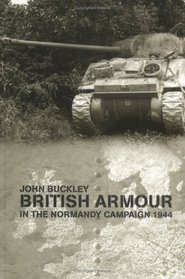Search -
British Armour in the Normandy Campaign 1944 (Cass Series--Military History and Policy, No. 15.)
British Armour in the Normandy Campaign 1944 - Cass Series--Military History and Policy, No. 15.
Author:
The popular perception of the performance of British armour in the Normandy campaign of 1944 is one of failure and frustration. Despite overwhelming superiority in numbers, Montgomery's repeated efforts to employ his armour in an offensive manner ended in disappointing stalemate. Indeed, just a week after the D-Day landings, the Germans claimed ... more »
Author:
The popular perception of the performance of British armour in the Normandy campaign of 1944 is one of failure and frustration. Despite overwhelming superiority in numbers, Montgomery's repeated efforts to employ his armour in an offensive manner ended in disappointing stalemate. Indeed, just a week after the D-Day landings, the Germans claimed ... more »
ISBN-13: 9780714653235
ISBN-10: 0714653233
Publication Date: 9/1/2004
Pages: 256
Edition: 1
Rating: ?
ISBN-10: 0714653233
Publication Date: 9/1/2004
Pages: 256
Edition: 1
Rating: ?
0 stars, based on 0 rating
Genres:
- History >> Europe >> England >> General
- History >> Europe >> France >> General
- History >> Military >> General
- History >> Military >> World War II >> General




